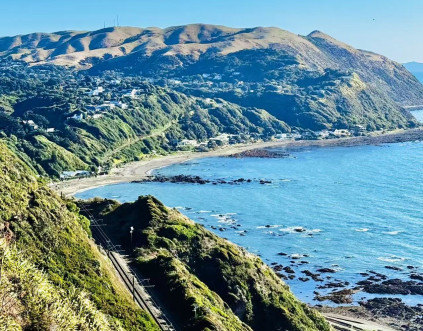Researcher profile: Ke Wang
Charting a smoother road to post-disaster recovery
The road to recovery after a natural hazard event can be long and windy, and without a good map to chart the course, it’s easy to get delayed by potholes and roadworks. 
But past recovery efforts can teach us important lessons about what to do (or not to do) in future events.
Victoria University of Wellington PhD student Ke Wang is taking a closer at the recovery efforts following past disasters to learn about the future – with a modern twist.
Ke’s novel NHC-funded research incorporates new sources of data, like satellite imagery, online activity and detailed demographic data, to map how different places recover from natural hazard events.
Her work will highlight how recovery differs between places and hazard types (earthquakes vs. storms), including which communities rebound more slowly and why.
The work can contribute to developing more targeted, evidence-based policies that that take into account the unique challenges and strengths of different communities, ultimately charting a smoother road to recovery.
Read our interview with Ke as part of our monthly Researcher Profile series.
What is your NHC funded project, in a nutshell, and why is it important to New Zealand?
My project looks at how communities across Aotearoa recovered after the 2023 Auckland Anniversary Flood and Cyclone Gabrielle. Funded by NHC, my research uses large-scale administrative data and spatial analysis to track recovery in income, housing, and mental health. The goal is to provide practical evidence that can support disaster response and recovery planning in New Zealand.
What do you like most about your work?
I enjoy working with complex datasets to uncover patterns that help explain how people and systems respond to major disruptions. It’s rewarding to know that the results of my research might help improve how we prepare for and recover from future disasters.
Why is it important to invest in natural hazards research like yours?
New Zealand is regularly exposed to natural hazards, from floods to earthquakes. Research like mine helps us better understand what happens after these events — how communities recover, what challenges arise, and where support is most needed. By learning from past disasters, we can improve future planning, reduce long-term costs, and strengthen our ability to respond effectively.
What is your personal experience with natural disasters, and how has it influenced your research?
I haven’t personally experienced a major natural disaster, but through my research, I’ve come to deeply understand how disruptive and long-lasting these events can be. Seeing the real impacts in the data—on people’s income, housing, and well-being—has made me even more motivated to contribute to research that helps improve disaster recovery efforts and long-term planning.
What are your ambitions for your research or career?
I hope to continue working at the intersection of data, economics, and real-world challenges. My goal is to produce research that not only advances academic understanding but also helps decision-makers improve disaster recovery and resilience planning. I’m especially interested in combining large-scale data with practical insights to support better outcomes for communities affected by natural hazards.
What is your vision for a resilient New Zealand – what does it mean/look like?
To me, a resilient New Zealand is one where communities, systems, and institutions can recover quickly and adapt effectively after natural disasters. It means having the data, tools, and plans in place to respond to future events—not just rebuilding what was lost but improving what comes next. Resilience is also about learning from each event and making smarter decisions every time.
Do you have a favourite anecdote or memory related to your research?
One moment that stands out was when I visualised building damage and placard data on a map for the first time. Suddenly, the numbers became real—it was no longer just a dataset, but a view into how a disaster had changed people’s homes and lives. That moment reminded me why this work matters and how powerful data can be when used well.
